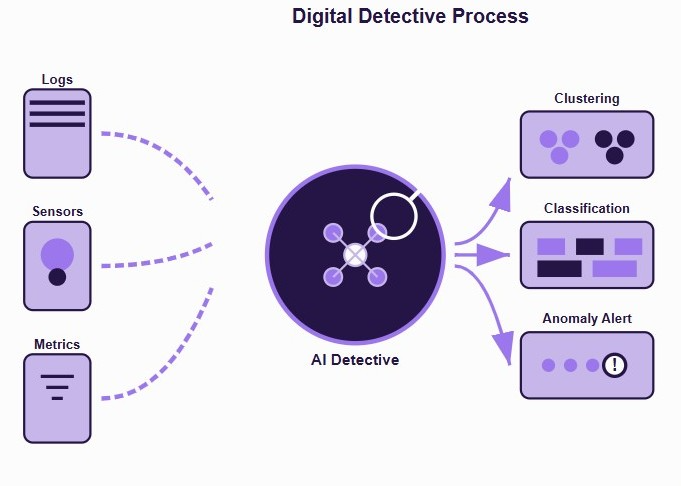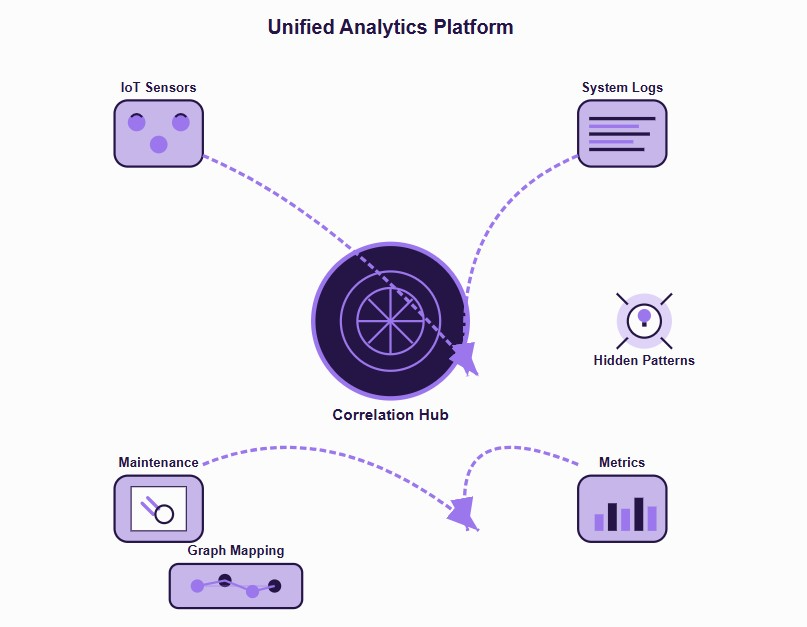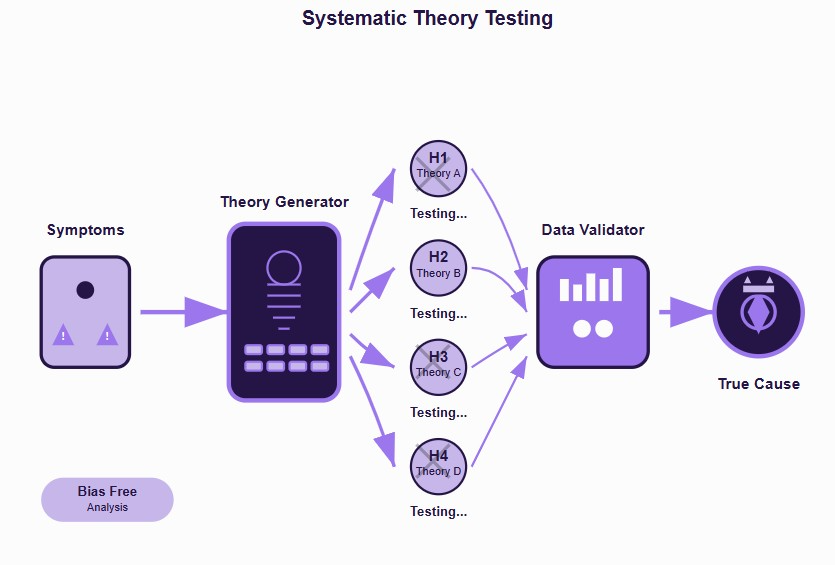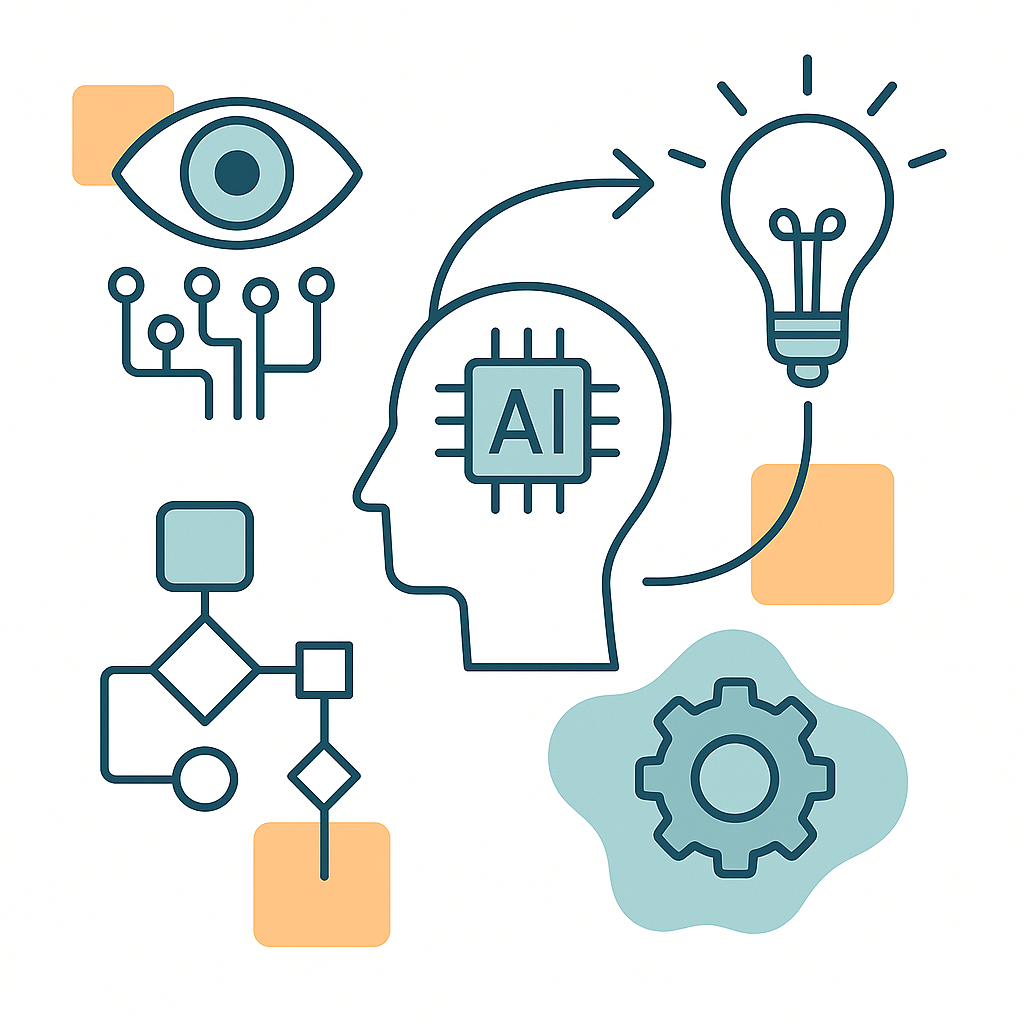A study found that 80% of downtime costs come from problems whose real causes were uncovered too late. That’s why leaders are searching for better ways to deal with overwhelming data and hidden issues.
How AI can improve root cause analysis isn’t just a technical discussion; it’s becoming a survival strategy for organizations under pressure to move faster and reduce costly errors.
In this article, we will:
- Discover how AI reveals hidden problem patterns
- See what changes with AI-powered RCA
- Start your RCA journey with an AI-driven plan
Unlock hidden insights: Seven AI techniques for superior root cause detection
Modern organizations face increasingly complex systems where traditional problem-solving methods fall short. Artificial intelligence is revolutionizing how we identify and resolve issues, offering unprecedented speed and accuracy in root cause analysis.
Here are seven specific ways AI transforms the entire RCA process:
1. Automated pattern recognition and data analysis
AI algorithms work like digital detectives, automatically scanning through millions of data points from various sources, including logs, sensors, and system metrics. These sophisticated systems can identify correlations between variables that would take human analysts weeks to discover.

- Unsupervised clustering algorithms group similar incidents automatically
- Classification algorithms categorize defects and predict root causes based on symptom patterns
- Anomaly detection models establish normal behavior baselines and flag deviations instantly
- Pattern recognition detects recurring failure signatures across different timeframes
Pro tip: Start with historical data from your most problematic systems to train these algorithms effectively. Companies implementing this approach typically see 50% faster defect identification compared to manual inspections.
2. Real-time multi-source data correlation
Instead of analyzing data sources in isolation, AI systems simultaneously process information from IoT sensors, system logs, maintenance records, and performance metrics. This comprehensive approach reveals connections that traditional methods miss entirely.

- Integrate all data sources into a unified analytics platform
- Apply graph-based algorithms to map dependencies between systems and components using a project dependencies template to keep relationships clear and maintainable
- Use time-series analysis to identify cascading failure patterns
- Deploy change correlation algorithms to link incidents with recent system modifications
The result is remarkable: the mean time to identify root causes drops from hours to under 5 minutes. This speed improvement alone can save organizations thousands of dollars in downtime costs.
3. Natural language processing for unstructured data analysis
Human-generated reports, tickets, and logs contain valuable insights hidden in unstructured text data. NLP algorithms automatically extract and analyze this information, turning chaotic text into actionable intelligence.

- Named entity recognition identifies specific components, error codes, and failure types
- Sentiment analysis detects urgency levels and impact severity from text descriptions
- Text classification automatically categorizes incidents by type and priority
- Topic modeling discovers hidden themes across multiple incident reports
Example: A telecommunications company used NLP to analyze thousands of customer complaint tickets, discovering that 60% of network outages shared common keywords that weren't apparent through manual review.
4. Predictive root cause analysis
Rather than waiting for problems to occur, predictive AI models analyze historical failure patterns to identify potential issues before they impact operations. This proactive approach transforms reactive troubleshooting into preventive maintenance.

- Train predictive maintenance models using historical failure data and sensor readings
- Implement early warning systems that alert teams to degrading conditions
- Use time-series forecasting to predict when system thresholds will be exceeded
- Deploy causal inference algorithms to identify which factors will likely cause future problems
Organizations implementing predictive RCA typically prevent 60-80% of potential incidents before they impact operations, resulting in significant cost savings and improved reliability.
5. Automated hypothesis generation and testing
AI systems generate multiple hypotheses about potential root causes based on current symptoms, then automatically test these theories against available data. This systematic approach eliminates guesswork and human bias from the investigation process.

- Bayesian networks model cause-and-effect relationships
- Decision trees systematically test different causal hypotheses
- Ensemble methods combine multiple algorithms for more robust hypothesis testing
- Causal discovery algorithms identify true causation rather than just correlation
Key benefit: This method achieves 95% accuracy in identifying true root causes versus 78% with traditional methods, ensuring teams focus their efforts on solving the right problems.
6. Continuous learning and adaptation
Unlike static traditional methods, AI systems continuously learn from new incidents and update their knowledge base. This adaptive capability means the system becomes more accurate and effective over time.
- Reinforcement learning optimizes RCA processes based on resolution outcomes
- Transfer learning applies knowledge from one system or domain to another
- Online learning algorithms update models with each new incident
- Feedback mechanisms allow human analysts to correct and improve AI recommendations
Pro tip: Establish regular review cycles where your team validates AI recommendations and provides feedback. This human-in-the-loop approach typically improves algorithm accuracy by 10-15% annually.
7. Automated solution recommendation
Beyond identifying problems, AI systems analyze historical resolution data to recommend specific corrective actions. Generative AI can even create detailed troubleshooting procedures automatically, guiding teams through proven solution paths.
- Build knowledge graphs linking root causes to proven solutions
- Use case-based reasoning to match current problems with similar past incidents
- Implement recommender systems that suggest the most effective resolution paths
- Deploy generative AI to create detailed remediation procedures automatically
The impact is immediate: organizations typically see a 50% reduction in mean time to resolution (MTTR) within the first two months of implementation, dramatically improving operational efficiency and customer satisfaction.
Implementing these AI-driven methods transforms reactive troubleshooting into proactive problem-solving, delivering measurable improvements in speed, accuracy, and operational efficiency.
Breaking free from limitations: Traditional vs AI-powered RCA analysis
Understanding the stark differences between conventional methods and AI-driven approaches helps organizations make informed decisions about modernizing their root cause analysis processes.
This comparison reveals why leading companies are making the switch to intelligent systems.
Comparison overview
Key transformation benefits
The shift from traditional to AI-powered RCA addresses critical pain points that have plagued organizations for decades. This transformation delivers immediate value across multiple operational areas.
Major improvements include:
- Speed breakthrough: Investigation teams complete analysis in under an hour versus several days with manual methods
- Cost reduction: Organizations save $1,800-$4,200 per incident through faster resolution and reduced labor costs
- Accuracy boost: Error rates drop by 60% when human bias and fatigue are eliminated from the process
- Resource optimization: Senior engineers focus on strategic initiatives while AI handles routine data analysis
- Scalability advantage: Systems automatically adapt to increased data volume without hiring additional analysts
These improvements demonstrate why AI-powered RCA is becoming essential for competitive operations.
From vision to reality: Your AI-powered RCA implementation blueprint
Successfully deploying AI-powered root cause analysis requires strategic planning and systematic execution. This roadmap guides decision-makers through the essential phases, ensuring smooth implementation and faster time-to-value.

Phase 1: Foundation and assessment (weeks 1-4)
Start by evaluating your organization's current capabilities and establishing the groundwork for AI implementation. This critical phase determines project success and prevents costly mistakes down the road.
Key activities:
- Conduct a comprehensive data audit to identify available sources and quality levels
- Assess existing infrastructure capacity for AI workloads and data processing requirements
- Map current RCA processes to understand workflow integration points
- Define success metrics and establish baseline measurements for comparison
Team requirements: Appoint a project champion with executive support and form a cross-functional team including IT, operations, and domain experts, supported by IT project management software to coordinate tasks and evidence.
Phase 2: Data preparation and infrastructure setup (weeks 5-8)
Clean, accessible data forms the backbone of effective AI systems. This phase focuses on creating robust data pipelines and ensuring your infrastructure can support AI processing demands.
Essential preparations:
- Implement data governance policies to ensure consistency and quality standards
- Create unified data lakes or warehouses aggregating multiple sources
- Establish real-time data streaming capabilities for continuous analysis
- Set up secure API connections between existing systems and new AI platforms
Infrastructure needs: Plan for cloud computing resources or on-premises hardware capable of handling machine learning workloads. Most organizations require 2-4x times their current processing capacity.
Phase 3: Model development and training (weeks 9-16)
This phase involves selecting appropriate AI algorithms, training models on your historical data, and fine-tuning performance. Model accuracy directly impacts the value you'll receive from the system.
Development priorities:
- Select proven algorithms suitable for your specific use cases and data types
- Train models using historical incident data spanning at least 12-18 months
- Implement validation procedures to test accuracy against known outcomes
- Develop automated retraining schedules to maintain model effectiveness
Critical success factor: Involve domain experts throughout training to validate results and provide business context that improves model interpretability.
Phase 4: Integration and testing (weeks 17-20)
Seamless integration with existing workflows ensures user adoption and maximizes return on investment. This phase focuses on creating intuitive interfaces and reliable system connections.
Integration essentials:
- Deploy user-friendly dashboards that present AI insights in actionable formats inside a project dashboard template for consistent reporting
- Create automated alerting systems for critical findings and anomalies
- Establish feedback loops allowing users to improve AI recommendations
- Conduct thorough testing with real-world scenarios and edge cases
Timeline expectation: Most organizations achieve initial value within 3-4 months, with full optimization typically taking 6 months from project start.
Essential prerequisites for success
Data requirements:
- Minimum 18 months of historical incident data for effective training
- Multiple data sources, including logs, metrics, and maintenance records
- Clean, structured data with consistent formatting and labeling
Team capabilities:
- Data science expertise, either in-house or through consulting partnerships
- IT infrastructure team familiar with cloud platforms and API integrations
- Operations specialists who understand current RCA processes and pain points
Technology foundation:
- Scalable computing infrastructure capable of processing large datasets
- Modern data storage solutions with fast query capabilities
- Security frameworks supporting AI model deployment and data protection
Budget planning: Expect initial investment of $100K-$500K for mid-size organizations, with ROI typically achieved within 8-12 months through reduced downtime and improved efficiency.
Following this structured approach ensures successful AI-RCA deployment while minimizing risks and maximizing organizational value.
Shift from reactive troubleshooting to predictive accuracy
Traditional RCA often leaves teams chasing symptoms instead of solving real problems. By leveraging AI-driven techniques, from pattern recognition and real-time data correlation to predictive modeling and automated recommendations, organizations can move beyond reactive firefighting. The result is fewer disruptions, faster resolutions, and smarter prevention.
To stay competitive, now is the time to embrace AI-powered RCA and transform overwhelming data into clear, proactive insights that protect both performance and profits.


%20(1).jpg)
_light%201.png)





